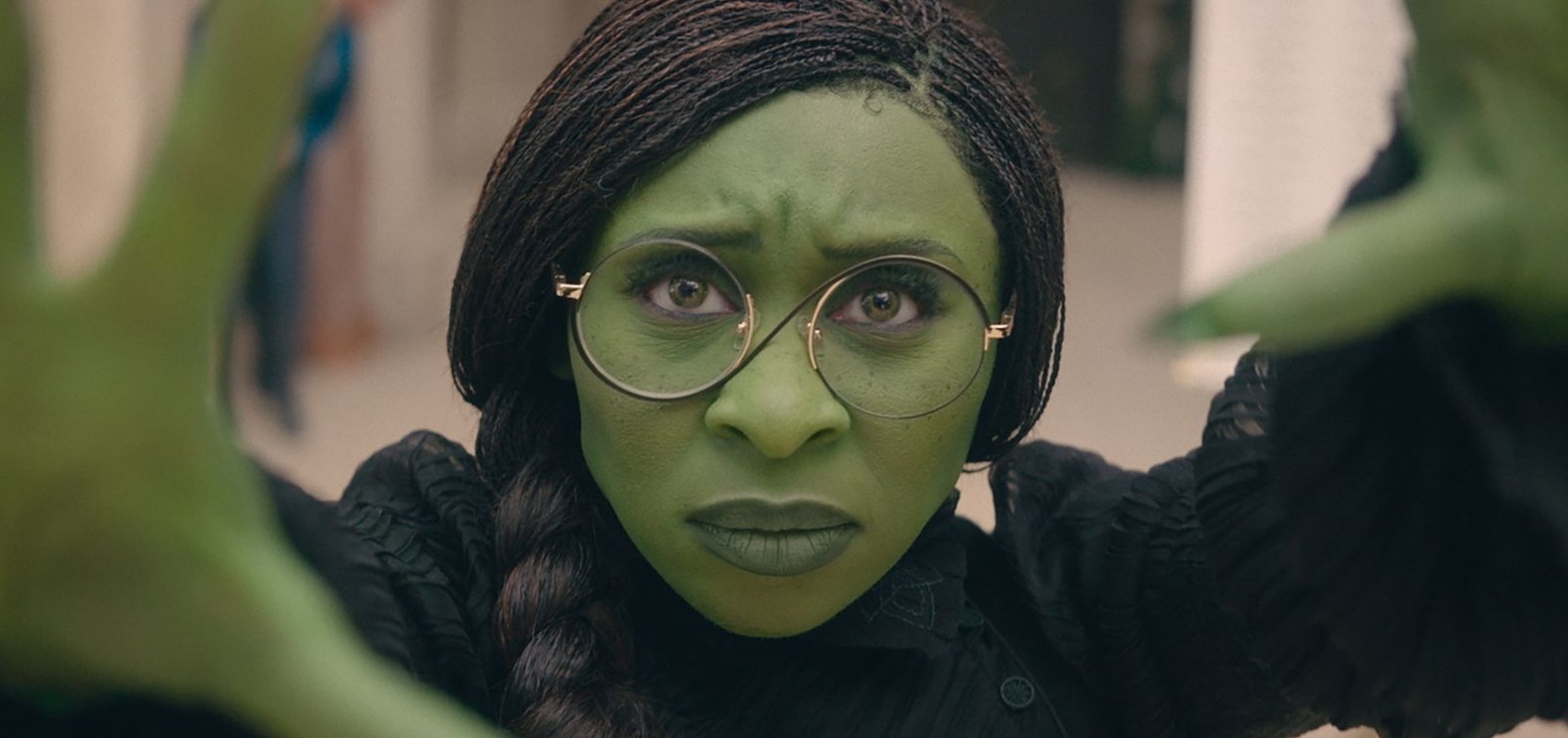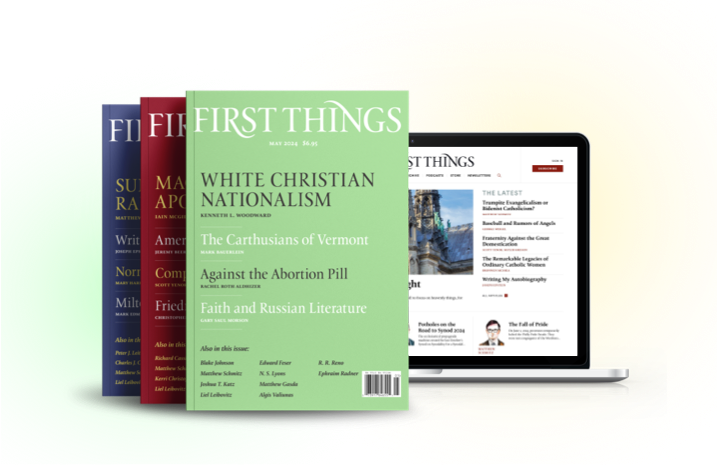
In recent years, Hollywood has produced movies that cast once irredeemable villains, such as Maleficent, Cruella de Vil, and the Joker, in a sympathetic light. The 2003 Broadway musical Wicked, adapted from the 1995 novel, was ahead of the curve in that regard. In this retelling of the Wizard of Oz, the Wicked Witch of the West, or “Elphaba,” is no evil villain but a misunderstood victim. Last month, the first part of the musical’s cinematic adaptation hit theaters, to critical and box office success; it is now the highest grossing musical adaptation ever. This bodes well for Hollywood, which is sure to capitalize on the film’s success, and fans of the “sympathetic villain” genre. However, it does not bode well for our culture. Hollywood’s tendency to subvert classic villains (and as a consequence, classic heroes), usually in response to the latest progressive agenda, indicates a lack of social moral clarity, which is sure to have detrimental consequences.
Wicked starts in medias res. After the Wicked Witch of the West’s supposed demise at the hands of Dorothy, the people of Munchkinland cheer and celebrate the good news given by Glinda the Good. During the celebration, a little girl asks Glinda: “Why does wickedness happen?” “That’s a good question,” she replies. “Are people born wicked or do they have wickedness thrust upon them?” Cue the flashback.
In many ways, Elphaba fits into a recent archetype of the contemporary female hero: the unappreciated “girl who reads.” Smart, naturally gifted, righteous, she is the type of girl who takes pride in correcting people’s grammar and “speaking up” for the downtrodden—in this case, Oz’s talking animals (the film’s catch-all representation of marginalized peoples). But because of the color of her skin—bright green, a mystery since birth—and her volatile magic, she is ostracized. Her virtue goes unrecognized.
Through a series of haphazard events, Elphaba is offered the opportunity to attend Shiz University, Oz’s most prestigious academy for future sorcerers. She is forced to room with Galinda (the future Good Witch of the South). Madame Morrible, the dean of Sorcery Studies, notices Elphaba’s gifts and seeks to help her achieve her potential, in true modern “girlboss” fashion. Once she learns to control her magic, she’ll be granted an audience with the wizard, who will fulfill her heart’s desire: to stop being green and therefore be accepted and loved.
Elphaba joins the pantheon of “Mary Sues”—one-dimensional wish-fulfillment characters, onto which female viewers can project themselves—that have become a crutch of modern cinema. Elphaba’s only significant character growth, as is often the case with Mary Sues, consists of discovering “the power within.” She has no real character flaws, and her only perceived defect—the color of her skin—is, in the end, not something to be changed, but a gift to be embraced.
The wizard, when Elphaba finally meets him, is predictably revealed to be a fraud. He and Madame Morrible decide to scapegoat Elphaba, who refuses to partake in the wizard’s totalitarian ambition, which includes controlling Oz’s animals and rendering them mute. She is declared “wicked,” a common enemy that serves to unite the people of Oz and distract them from the real threat—the power-hungry patriarch.
Wicked grants the audience, if nothing else, a valuable warning against the easy path of Girardian scapegoatism, in which social cohesion is built through the identification of an “enemy” unto whom the society’s burdens can be transferred. There is a risk, however, in removing innately evil villains from film—one of the main fountains of the contemporary collective imagination. The risk is that we can forget true heroism in the process.
Some cheer the rise of the villain origin story, arguing that it represents a growing audience maturity in which characters are allowed to function like actual people, people with moral complexity. In the real world, they claim, Manichaeism rarely applies. Our choices are never as black and white as they are in fiction. In this view, villains like the Wicked Witch or Maleficent require an origin story or a redemption arc—a path toward perfectibility, taken or avoided—that exposes the audience to moral greyness.
The clear images of true evil present in the best fairy tales, ballads, myths, and legends offer both a vision of what is to be avoided at all costs, as well as a vision of virtue. As such, the “sympathetic villain” genre is a symptom of a society that disagrees on what is good and what is evil, or that tries to explain evil away as trauma, psychopathy, or pathology. But to identify and avoid evil, we must first learn to recognize the good. The insistence on subverting villains is a sign we have lost confidence in our belief that we can know what heroism looks like, a heroism that displays the good that would oppose their unrighteousness. In a world without any moral certitude or any agreed upon system to define true virtue, what is wickedness anyhow? It would be just a matter of perspective.
A recent subversion of the genre can be seen in the brilliant recent Max miniseries The Penguin. The show flirts with the idea that the classic Batman villain might deserve our sympathy. But in the end, the Penguin reveals himself to have no redeeming qualities. In a harrowing flashback, we witness him killing his two brothers when they were children. The remorse we expect never comes. The audience is made to feel disgusted for having ever sympathized with him in the first place.
Evil calls upon heroism to confront it. In the final shot of the show, we see the Bat Signal shine across the Gotham sky. The Penguin’s malice evokes Batman’s righteousness, just as the wickedness of the Witch of the West evokes Dorothy’s good-heartedness and bravery. True evil deserves its place on the screen. Confidence when displaying it in our stories is essential to never losing sight of the good we strive toward in our fight against it.
Rome and the Church in the United States
Archbishop Michael J. Curley of Baltimore, who confirmed my father, was a pugnacious Irishman with a taste…
Marriage Annulment and False Mercy
Pope Leo XIV recently told participants in a juridical-pastoral formation course of the Roman Rota that the…
Undercover in Canada’s Lawless Abortion Industry
On November 27, 2023, thirty-six-year-old Alissa Golob walked through the doors of the Cabbagetown Women’s Clinic in…

